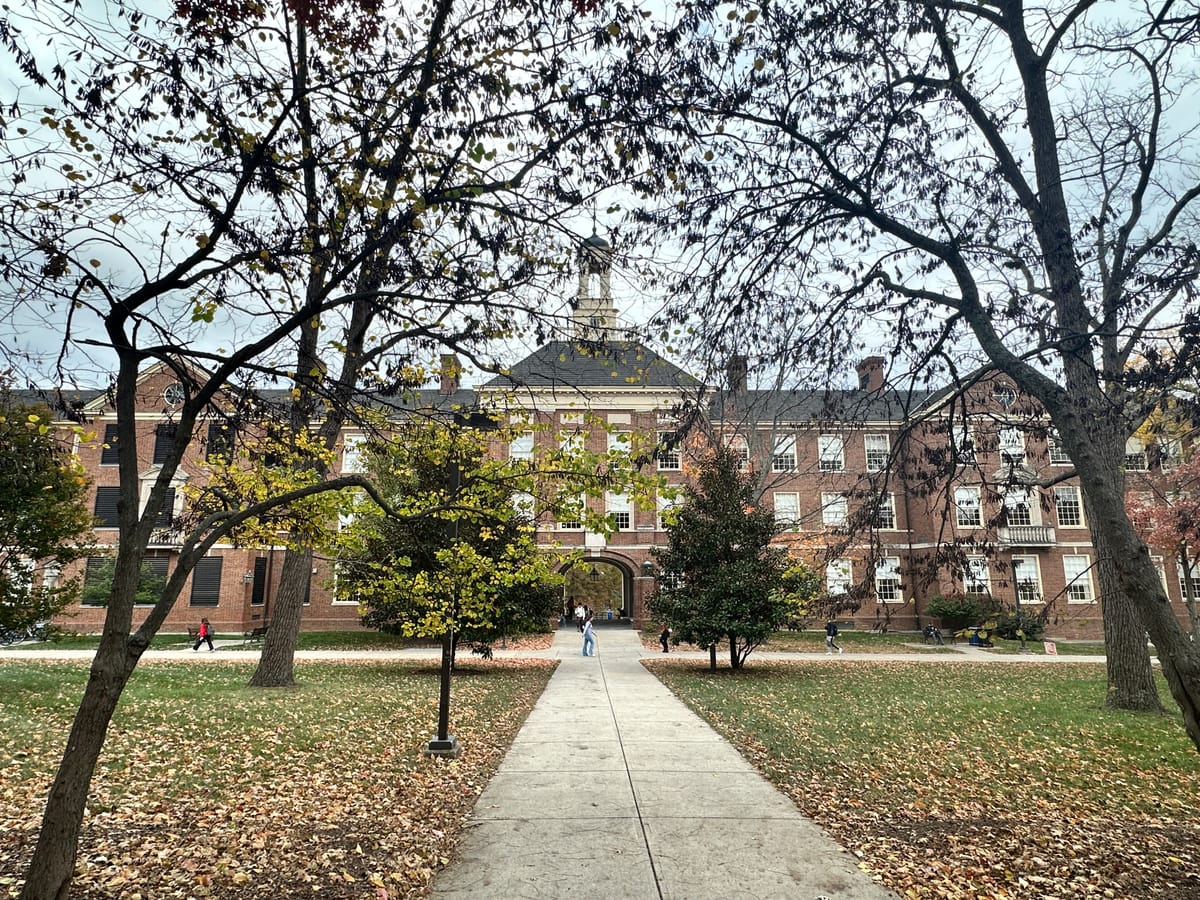Miami students get in on polling business for 2024 election
Miami University students got to try their hands at polling ahead of the 2024 election and will spend time analyzing their findings during the rest of the fall semester.

Donald Trump has won the 2024 presidential election, including by a comfortable margin of 11 points in Ohio. The once-swing state which voted for Barack Obama in 2008 and 2010 is now solidly Republican — no Democratic candidates on the ballot won statewide races this year.
Still, that didn’t stop pollsters from trying to predict the results in the Buckeye State ahead of Nov. 5.
This year, those pollsters included a team of Miami University students, led by political science professor Monica Schneider and associate professor Kevin Reuning. Across two classes, Schneider and Reuning had their students create and administer a text-to-web survey to more than 850 Ohioans, reaching out to more than 40,000 registered voters in the process.
Adrian Dooley, a junior Miami student with majors in data analytics, political science and data science and statistics, is in Reuning's class and helped to create and field the survey. He plans to go into election polling and forecasting after graduating. Dooley and the 39 other students in Reuning's class each signed up for one-hour shifts last week to reach out to Ohioans via text to take the survey online.
"Everything was standardized really, so there's not much opportunity for any certain students to skew results," Dooley said. "We got to see all the replies come in ... Every time you clicked 'Text,' [the system] would send a new text."
Dooley said he and the other students could answer basic questions from respondents with scripted responses and would forward anything more complicated to the professor.
The toplines of the survey focused on the presidential race, the U.S. Senate race between Democratic incumbent Sherrod Brown and Republican businessman Bernie Moreno, and Issue 1, a ballot measure which would have overhauled the redistricting process in Ohio if passed. The results of the survey, conducted Oct. 28-30, found Trump leading Vice President Kamala Harris 49% to 46% in Ohio, with Brown ahead of Moreno 48% to 46% Trump ultimately won more than 55% of the vote in Ohio, outside the poll’s 5% margin of error, while Moreno beat Brown 50.2% to 46.4%.
While the survey may not have accurately predicted the results of the race, Reuning said voters shouldn’t rely on polls as predictive tools. Reuning said polls are more accurate when aggregated together, and outliers should be expected.
Throughout the rest of the semester, Reuning said his students will analyze the demographic data and additional questions included in the survey to find more information about the Ohio electorate.
"To me, the most useful part of polls and surveys is how you can look at variation across groups and things like that," Reuning said. "That to me is more interesting than just, 'What's going to happen tomorrow?' My advice for a lot of people at this point is, if you can tell someone what the actual polling margin is in multiple states right now, then you need to just relax a little bit."
Students helped draft the additional questions on the survey, too. Dooley helped to write a question about where voters see the most political advertisements.
“We noticed that ads we see on our phones and social media are kind of different from the ones we see on TV,” Dooley said. “We want to see if that has any impact or not.”
Grace Gaston, a senior triple-majoring in political science, public relations and women’s, gender and sexuality studies, is in Reuning’s class this semester. She’s always followed the polls closely, she said, and is interested in how dependent politics and news can be on survey data.
By helping create and field Miami’s survey, Gaston said she learned about how easy it is to under- or over-represent different demographic groups in surveys.
“If you’re doing a text survey, older citizens might not be as apt to answer and might not even have the capability to answer,” Gaston said. “If you’re calling people directly, younger people are more often going to not answer the phone when strangers call them.”
As for why the survey’s findings didn’t accurately predict the election results, Gaston said a number of factors could contribute. Her personal theory is that some respondents who said they intended to vote may have ended up not casting ballots this year.
Reuning and his class will spend much of the rest of the semester digging into the demographic data and responses of the survey. Gaston said she’s most interested in looking into how the responses for the U.S. Senate race and Issue 1 differed demographically, particularly since Issue 1 failed. The survey had shown 46% of registered voters in support of Issue 1, 45% against and 9% unsure, but the measure was ultimately voted down 53.8% to 46.2%.
The survey was sponsored by Miami's Center for Career Exploration and Success and the Menard Family Center for Democracy.




